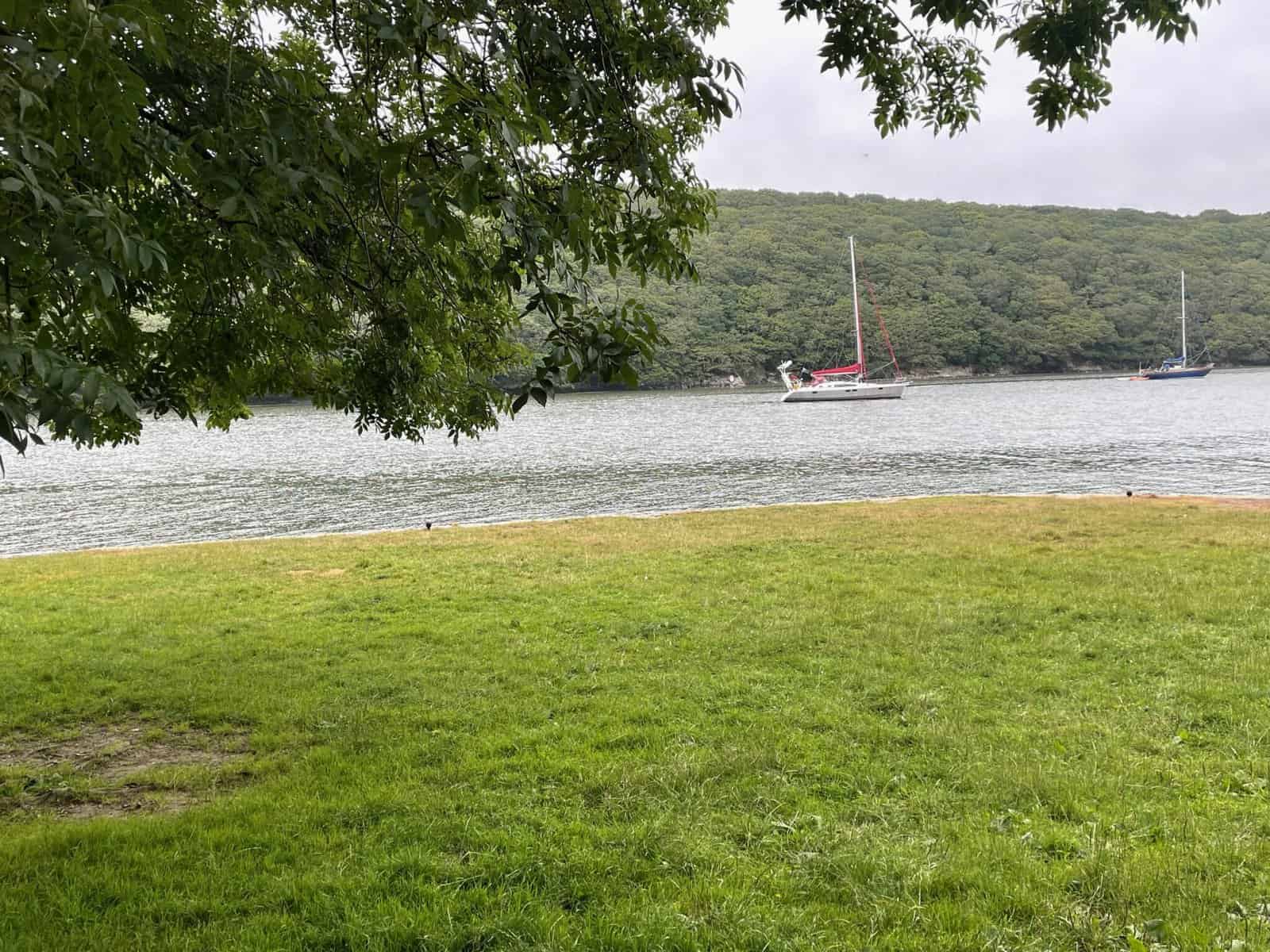On Sunday we sailed from New Grimsby Sound for the mainland. A helpful northerly wind was forecast but as we were clearing the islands it failed and became very variable. The tide set us well south of expectations and even the word engine was mentioned. But, eventually, the wind returned, as it will and we had a good passage with the tide turning to help us round the Lizard.
The Helford River
We had planned to enter the Helford River and shelter from forecast strong winds. But it was apparent from AIS that the rather limited anchorages were stuffed with visiting boats. Instead, we anchored outside in a cove sheltered from the westerly winds.
The next day we took the flood tide up the river past dozens of anchored boats and through densely crowded moorings. The river seems to have been completely overrun with boats.
With the flexibility of our draft, we continued past the last of the moorings into the upper reaches too shallow for most. We passed the entrance to the secretive Frenchman’s Creek immortalised by Daphne du Maurier in her novel of that name (we had explored it by dinghy when we visited in Santana in 2009) and anchored off Tremayne Quay where we would scarcely be afloat at low water. Tremayne Quay lies in Tremayne Woods – now belonging to the National Trust. We dinghied ashore and walked some miles through the woods in the evening. It is a lovely spot and well hidden away.
The next morning we took the top of the tide to the head of the river at Gweek. The navigable channel twists and turns from one bank to the other. Gweek is a hidden gem that we had previously only been able to visit by dinghy. This time we were welcomed alongside into a berth on which we could dry out. There is water only for two hours each side of high water and the contrast is remarkable. Gweek was once a substantial port. Today it houses the Gweek Classic Boat Yard where many boats are undergoing restoration. Some look like major projects that may never see the sea again. A number are lived in – some quite large and worthy of Noah. The yard is very active with up-to-date facilities. The excellent café is thriving and seems to be a social centre for the village.
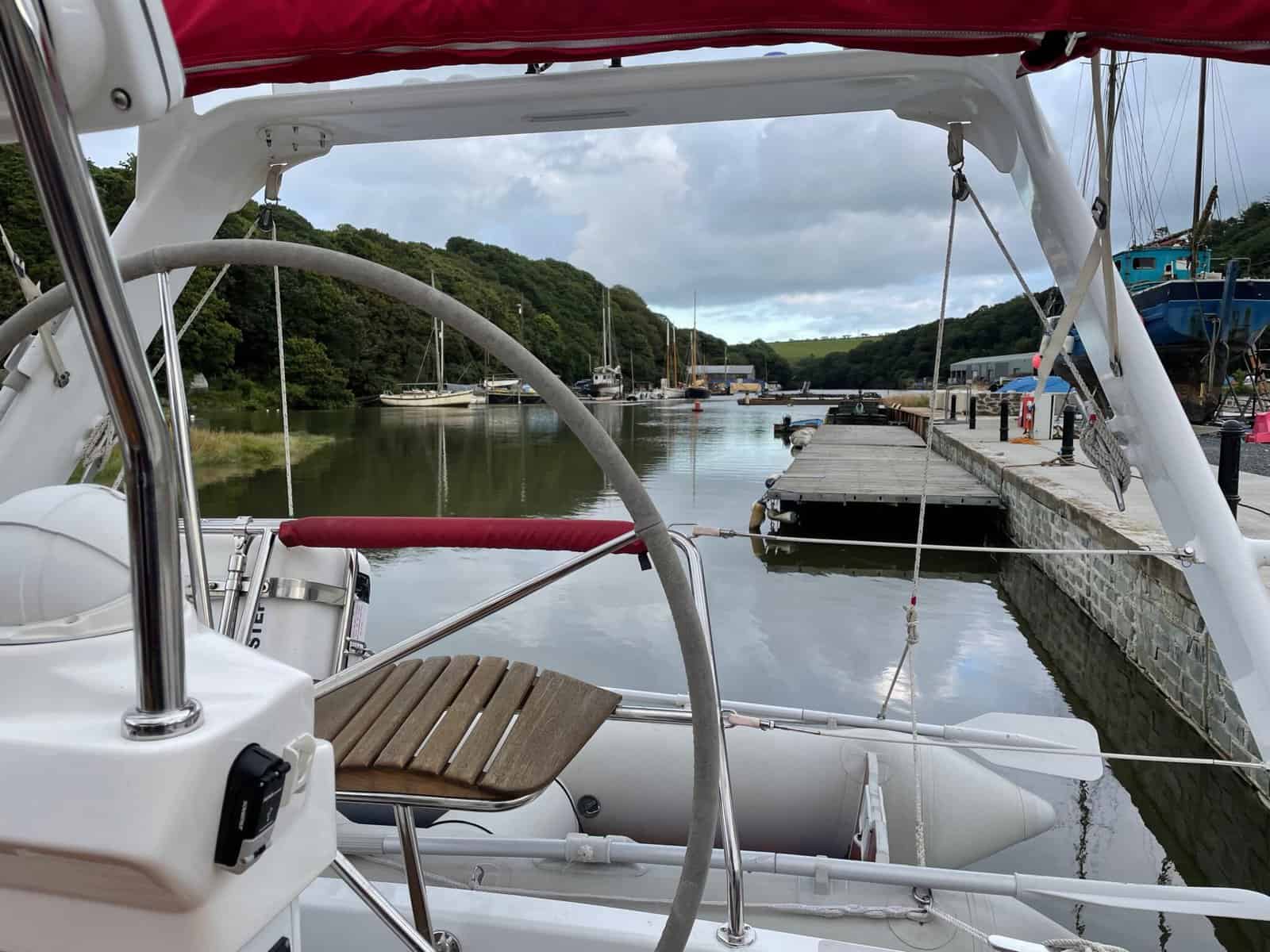
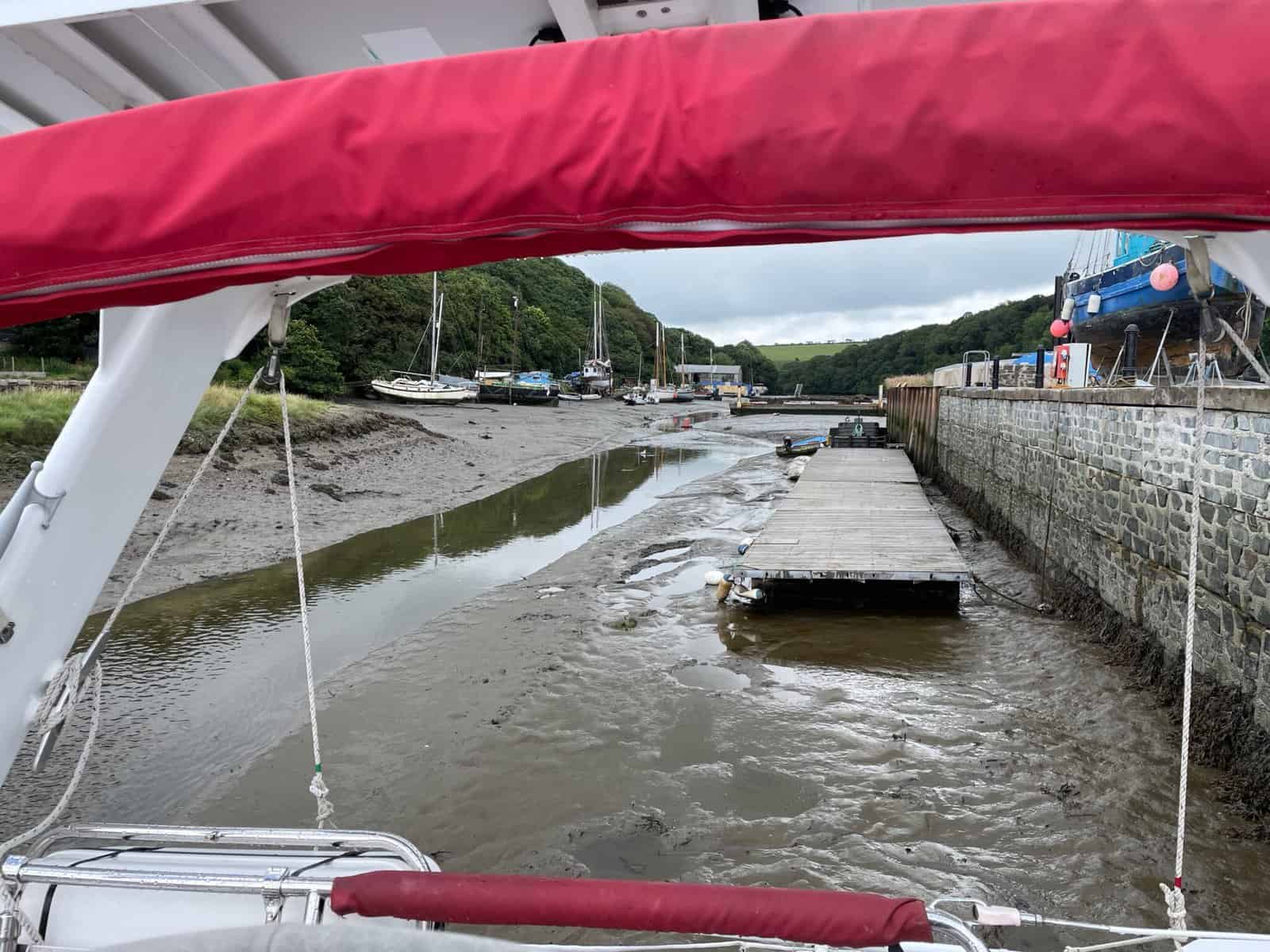

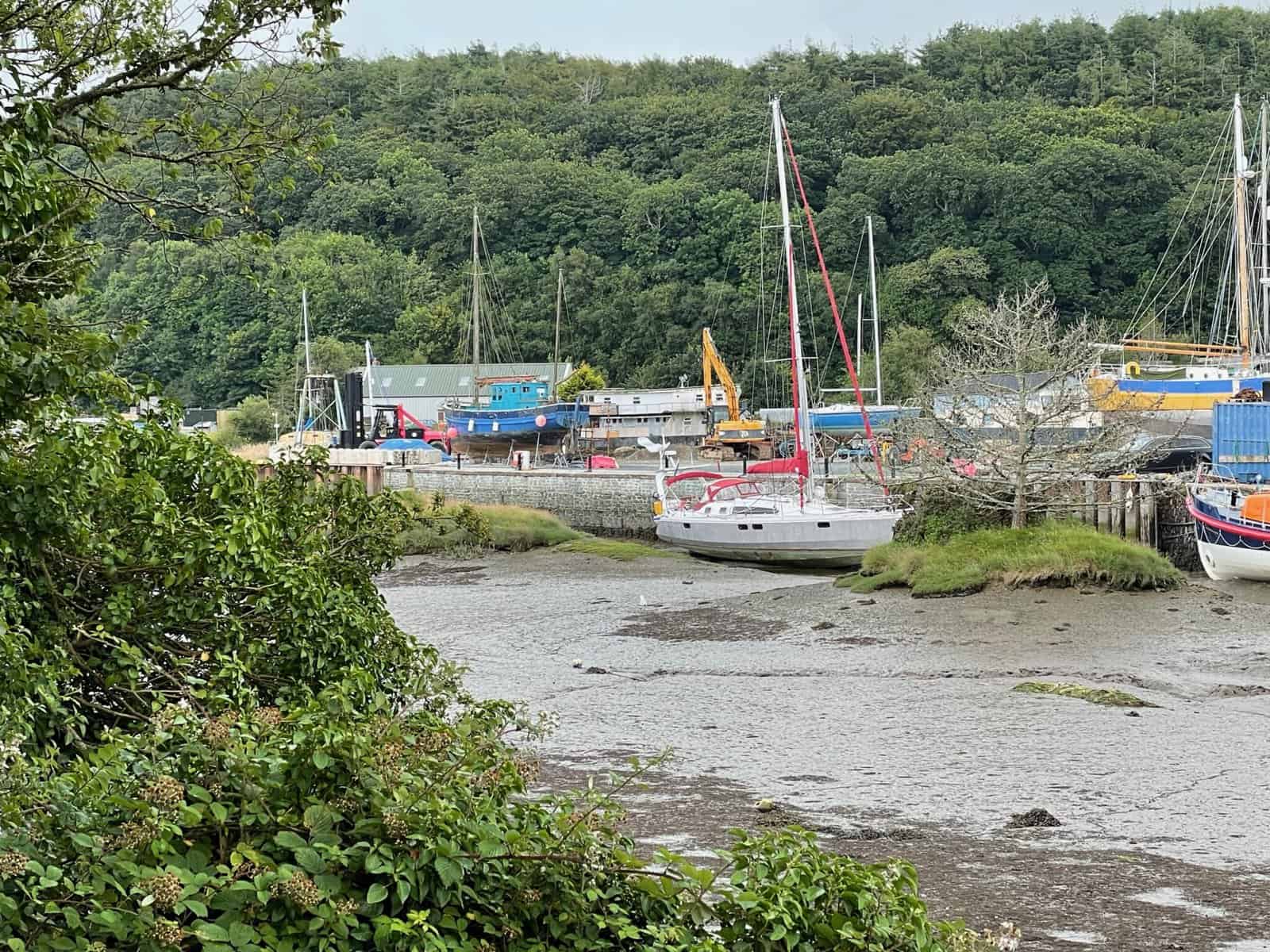
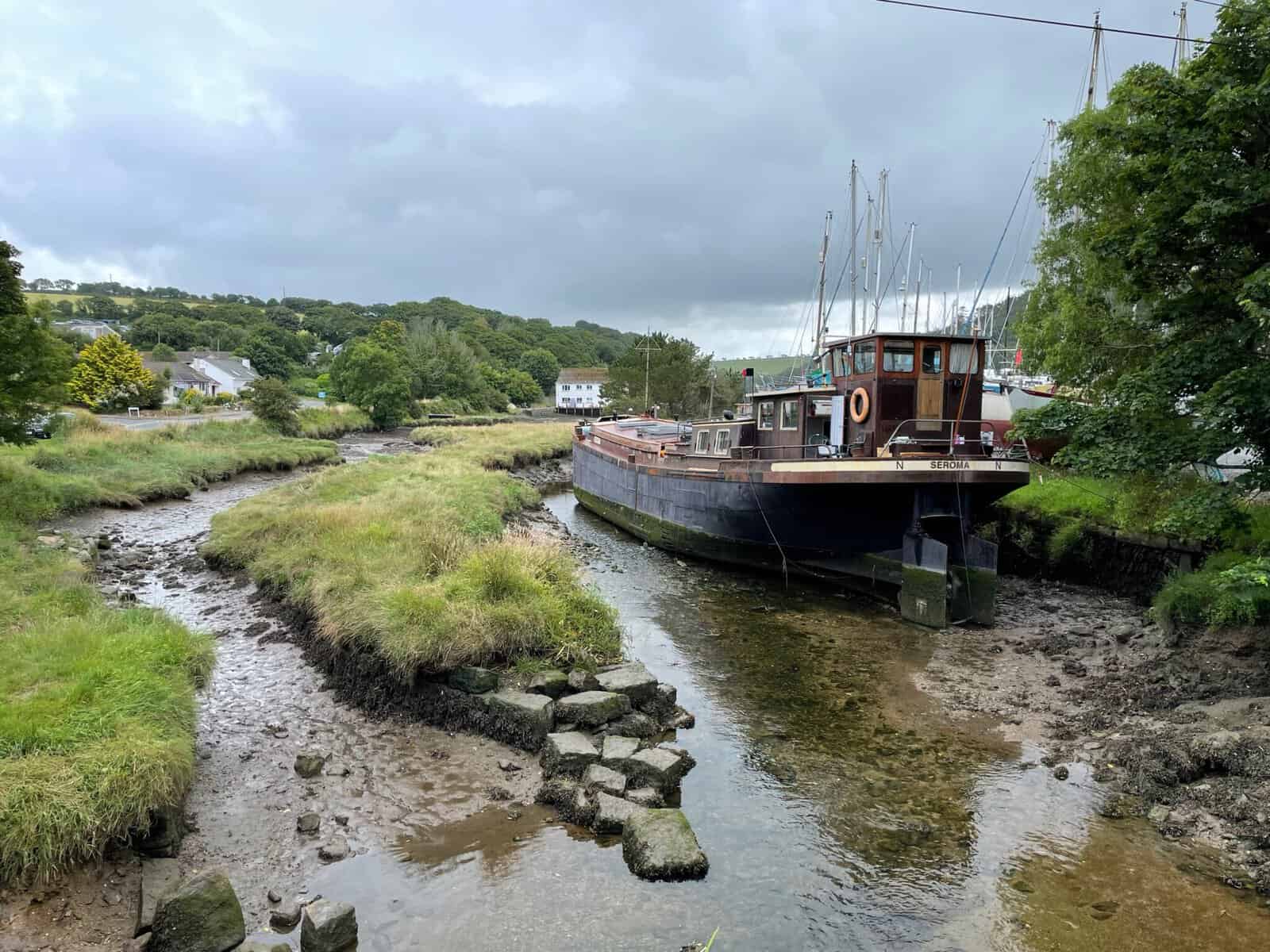
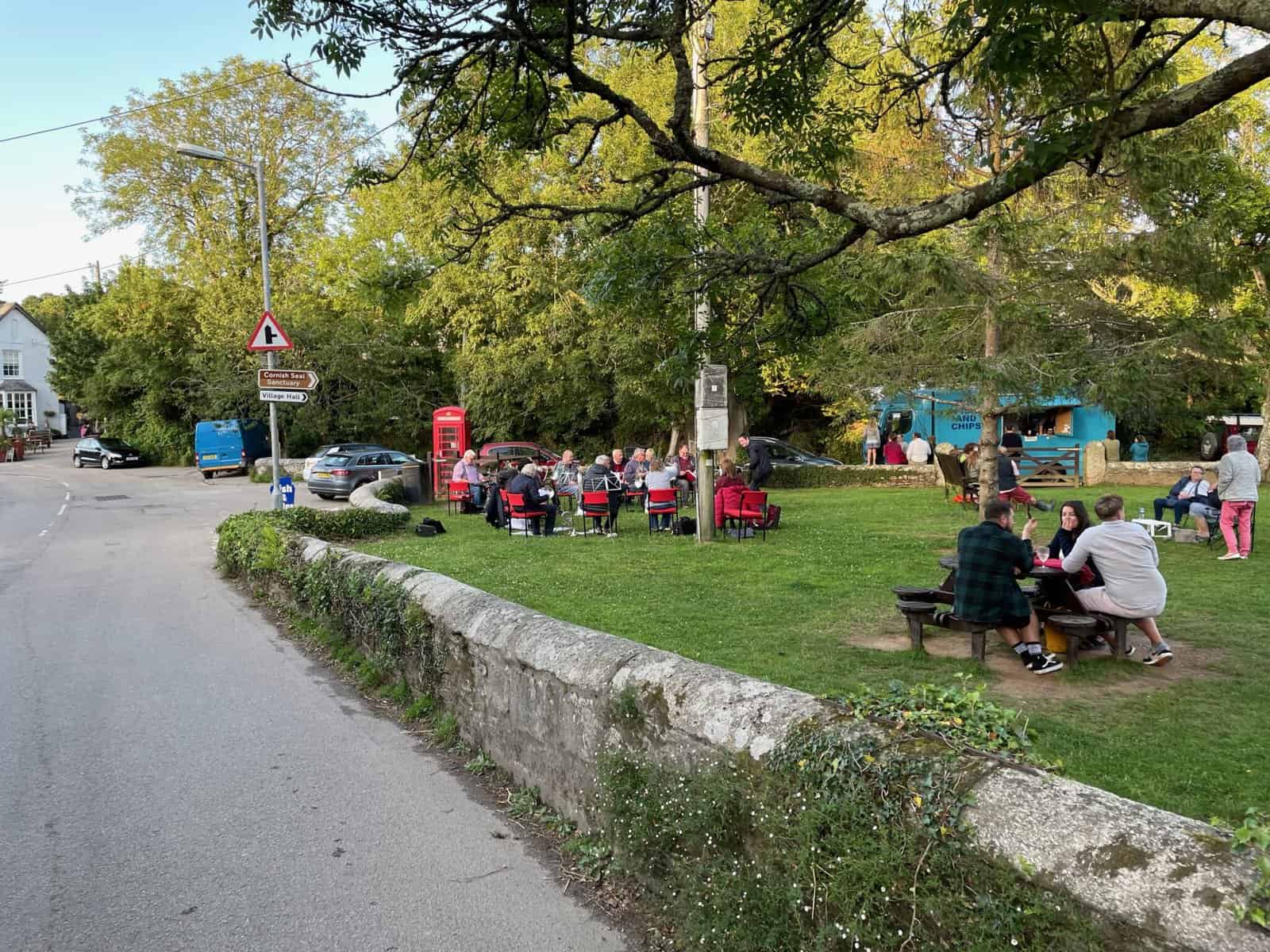
We had intended to stay just two nights in Gweek but, as the coming winds became Storm Evert, we decided to sit it out for two more in our snug berth. It was a good decision. We heard that, in the Scillies, seven yachts dragged onto the rocks. We had made the right decision to return from there when we did.
The River Fal and Truro
It was an easy sail from the Helford River into the Fal. The lower Fal is vast. There are lots of boats and plenty of room. We anchored for lunch and a rest and then took the evening flood up into where the river narrows into steeply sided wooded valleys that twist and turn. The river runs deep and, despite its narrowness, large ships still use it. We reached the top of the non-drying part at the attractive settlement of Malpas.
We had been minded to go all the way into Truro but there was no berth available and the dock is close under the busy A39. So we walked into town. Truro is the county town for Cornwall and an important centre. We enjoyed looking around and visited the cathedral (build from 1880). Truro is not what it once was as an attraction but it does have a large Tesco where we restocked.

From Malpas we sailed (mostly) all the way down to St Mawes close to the entrance, where we had stopped with Lucas on our way westward. We rowed over to the St Anthony peninsular, landing near the magnificent Place House from where we walked all around the St Anthony headland returning along the bank of Porth Creek. It is an excellent walk with great variety and spectacular views – recommended if you are ever near St Mawes.

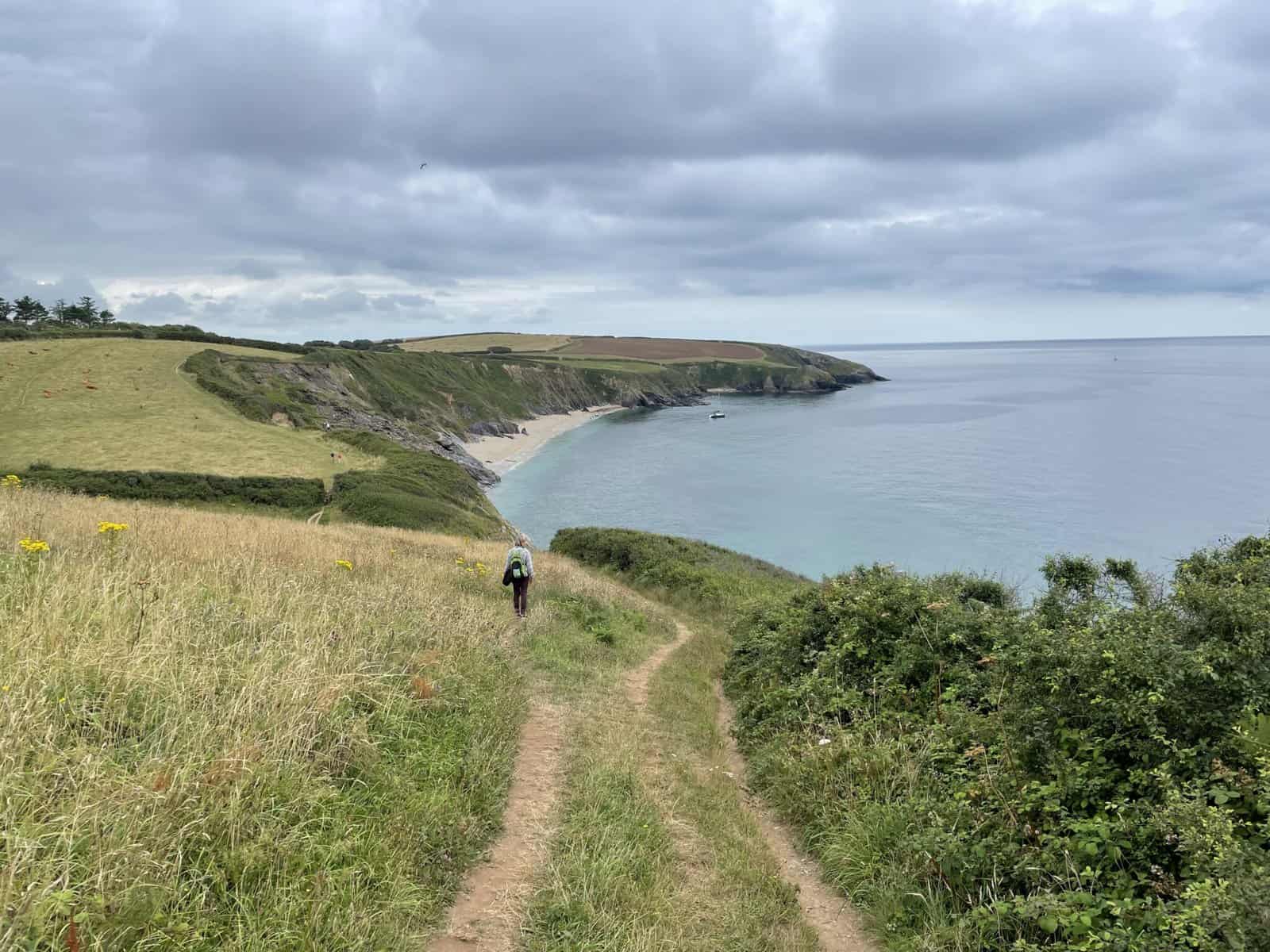
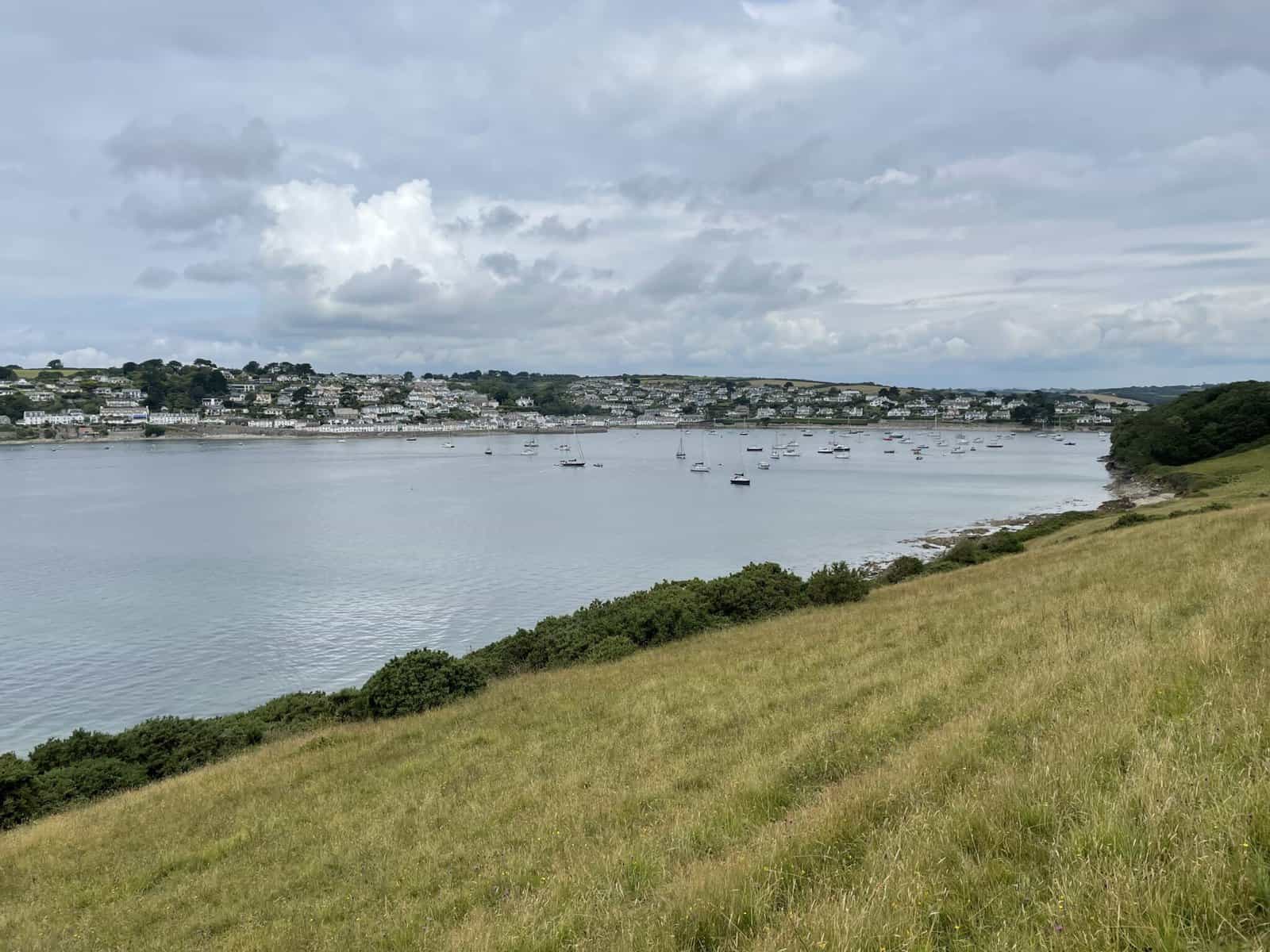
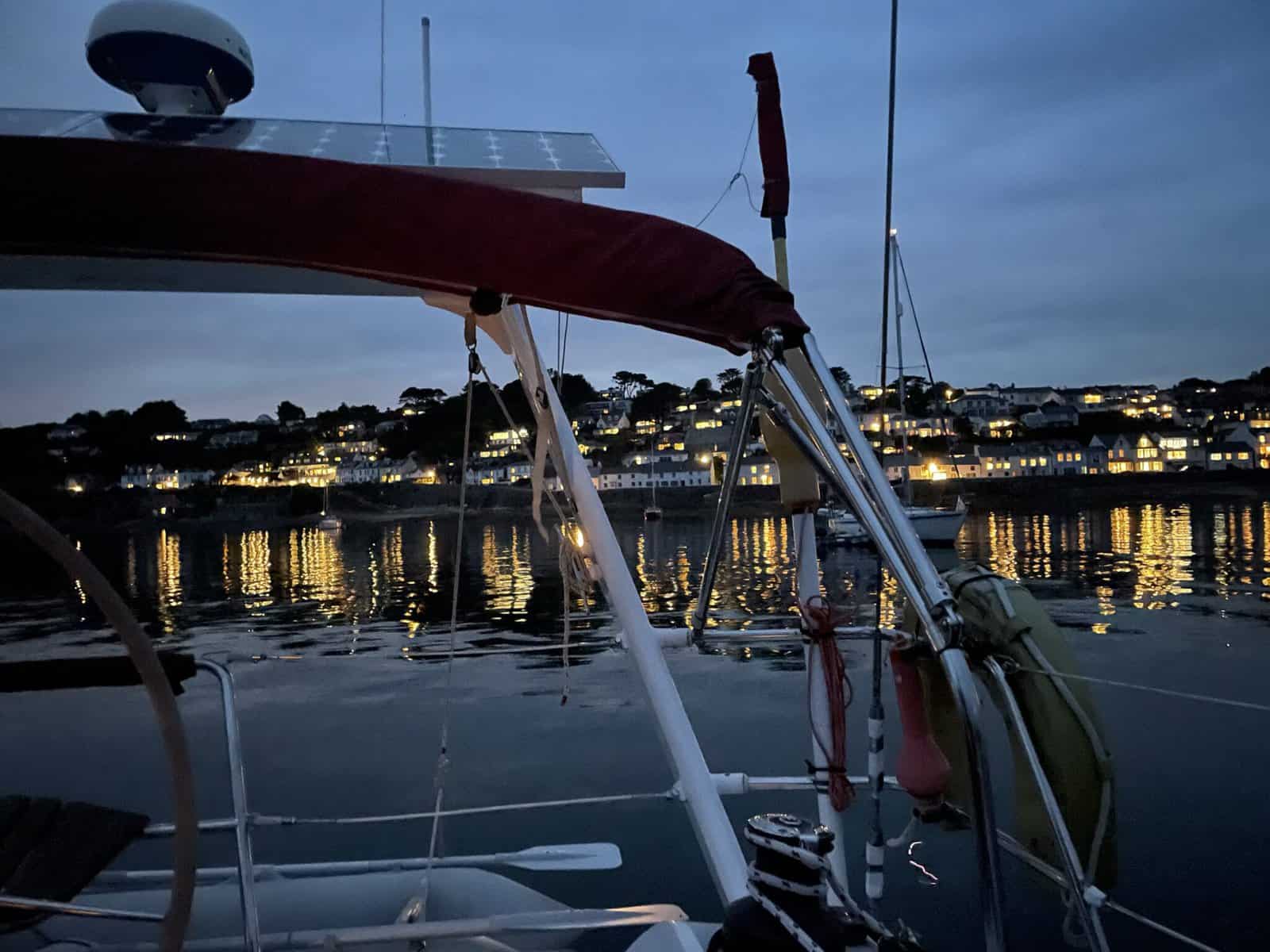
Fowey again
We had a good sail from St Mawes back to Fowey. During a light reach, we again used the new staysail as an addition. Once round Dodman Point we had a spinnaker run all the way to Fowey.
Fowey Harbour is exposed to the South West and strong winds are expected from there so we ran upriver to where it narrows around a double bend to sheltered moorings where we are sitting the winds out. One bank is deeply wooded and on the other is a railhead where china lay is loaded onto ships. We watched the complex process of marshalling the wagons into the loading bay.
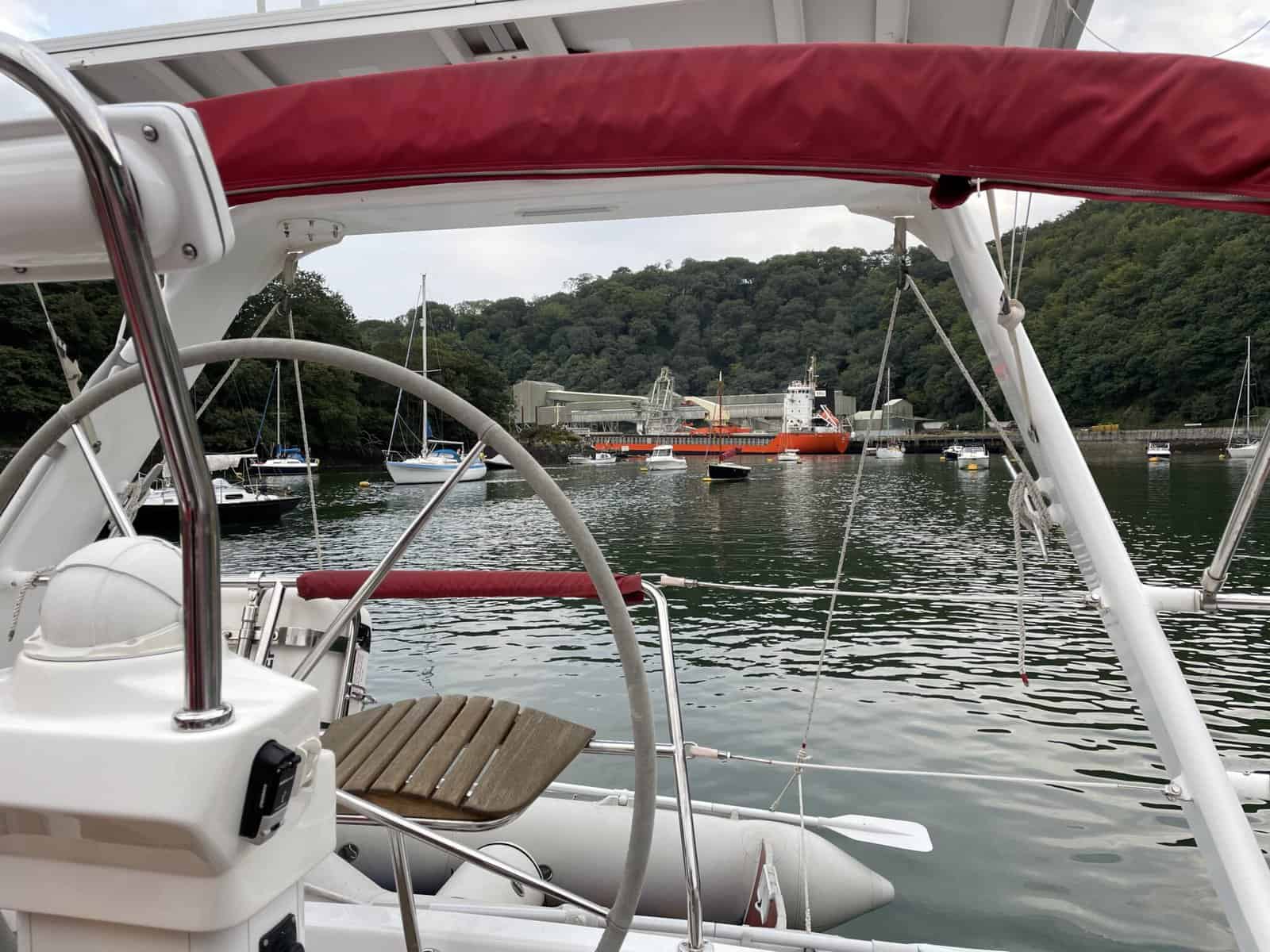
Having sat here for two days, we summoned the water taxi to take us into town. After the quietness, it was a bit of a shock to be landed on the town quay packed with summer visitors. After shopping, we enjoyed a meal at the Fowey Gallants Sailing Club.
Tomorrow Saturday we will emerge from our shelter to head further east.
Ynskje & Tony
This young seagull insisted on dicing with the wind generator blades. Sometimes the generator swung round and the tail vane would give it a shove.

